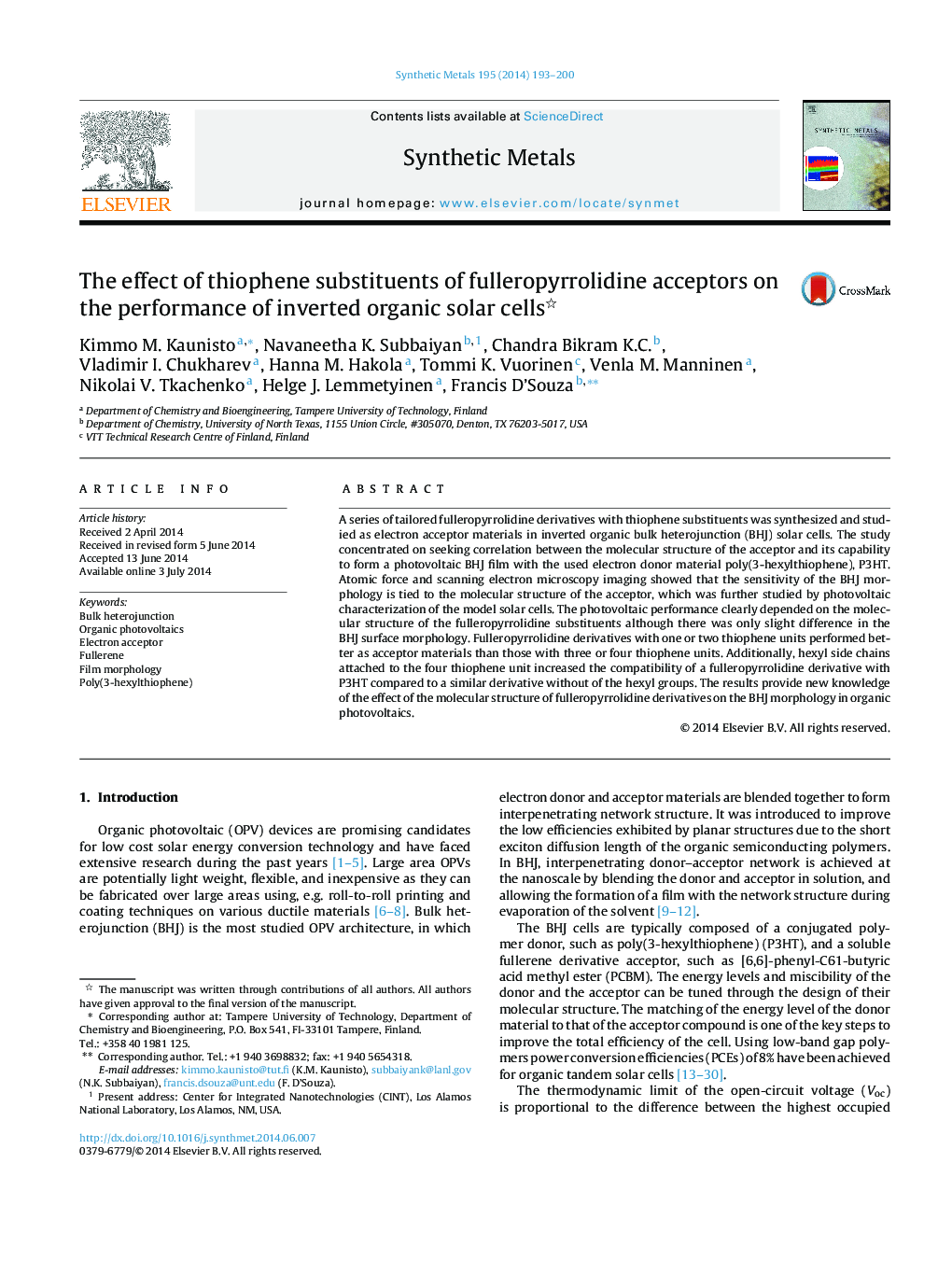| Article ID | Journal | Published Year | Pages | File Type |
|---|---|---|---|---|
| 1440944 | Synthetic Metals | 2014 | 8 Pages |
•Eight new fulleropyrrolidine derivatives for photovoltaic devices are synthesized.•Thiophene substitution enhances visible absorption of fullerene derivatives.•Results provide knowledge of the effect of molecular structure on film morphology.•Results serve as starting point for further studies of new acceptor compounds.•Good photovoltaic results are obtained.
A series of tailored fulleropyrrolidine derivatives with thiophene substituents was synthesized and studied as electron acceptor materials in inverted organic bulk heterojunction (BHJ) solar cells. The study concentrated on seeking correlation between the molecular structure of the acceptor and its capability to form a photovoltaic BHJ film with the used electron donor material poly(3-hexylthiophene), P3HT. Atomic force and scanning electron microscopy imaging showed that the sensitivity of the BHJ morphology is tied to the molecular structure of the acceptor, which was further studied by photovoltaic characterization of the model solar cells. The photovoltaic performance clearly depended on the molecular structure of the fulleropyrrolidine substituents although there was only slight difference in the BHJ surface morphology. Fulleropyrrolidine derivatives with one or two thiophene units performed better as acceptor materials than those with three or four thiophene units. Additionally, hexyl side chains attached to the four thiophene unit increased the compatibility of a fulleropyrrolidine derivative with P3HT compared to a similar derivative without of the hexyl groups. The results provide new knowledge of the effect of the molecular structure of fulleropyrrolidine derivatives on the BHJ morphology in organic photovoltaics.
Graphical abstractFigure optionsDownload full-size imageDownload as PowerPoint slide
